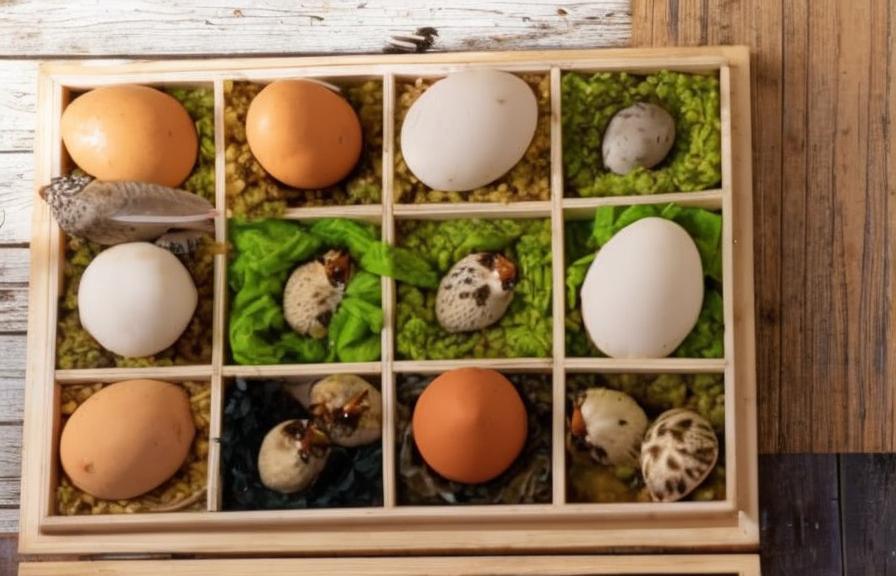The quail market has been steadily growing in recent years, as more and more people are becoming interested in raising quail for their eggs, meat, and even as pets. Quail are known for their small size, low maintenance, and high productivity, making them an attractive option for both small-scale and commercial breeders. The demand for quail products such as eggs and meat has been increasing due to their nutritional value and unique flavor. Quail eggs, in particular, are sought after for their high protein content and delicate taste, making them a popular choice for gourmet chefs and health-conscious consumers. Additionally, quail meat is lean and flavorful, appealing to those looking for a healthy alternative to traditional poultry. As a result, the quail market presents a promising opportunity for breeders to capitalize on the growing demand for quail products.
Furthermore, the quail market offers diverse opportunities for breeders to explore different niches within the industry. For example, some breeders may focus on selling quail eggs to local markets or restaurants, while others may specialize in providing quail meat to gourmet food establishments or health food stores. Additionally, there is a growing market for quail breeding stock, as more people are interested in starting their own quail flocks. Understanding the various segments of the quail market is essential for breeders to identify their target audience and develop a strategic approach to meet the demand for quail products.
Key Takeaways
- The quail market is growing due to increasing demand for quail eggs and meat as a healthy alternative to traditional poultry products.
- When selecting quail breeds, consider factors such as egg production, meat quality, and adaptability to your local climate.
- Creating the ideal breeding environment for quails involves providing adequate space, proper lighting, and a balanced diet.
- Managing quail breeding cycles involves monitoring egg production, incubation, and chick rearing to ensure a consistent supply of quail products.
- Maximizing quail egg production can be achieved through proper nutrition, lighting, and stress management for the quails.
- Marketing and selling quail products can be done through local farmers’ markets, online platforms, and direct sales to restaurants and specialty food stores.
- Ensuring profitability in quail breeding requires careful cost management, efficient production practices, and a strong understanding of market demand.
Selecting the Right Quail Breeds
Selecting the right quail breeds is crucial for successful breeding and production of quail products. There are several popular quail breeds that are commonly raised for their eggs, meat, or ornamental purposes. The Coturnix quail, also known as the Japanese quail, is one of the most popular breeds for commercial production due to its high egg-laying capacity and fast growth rate. Coturnix quail come in various color variations, such as tuxedo, golden, and white, making them an attractive option for breeders looking to produce ornamental quail as well. Another popular breed is the Bobwhite quail, which is known for its flavorful meat and adaptability to different climates. Bobwhite quail are often raised for hunting purposes as well as for their meat and eggs.
In addition to these popular breeds, there are other varieties of quail that breeders may consider based on their specific goals and preferences. For example, the Pharaoh quail is another type of Coturnix quail that is known for its high egg production and docile temperament, making it a suitable choice for backyard breeders. The Texas A&M quail is a specialized breed developed for its high egg-laying capacity and is often favored by commercial breeders. When selecting quail breeds, breeders should consider factors such as egg production, meat quality, temperament, and adaptability to their local climate to ensure the success of their breeding program.
Creating the Ideal Breeding Environment
Creating the ideal breeding environment is essential for the health and productivity of quail flocks. Quail are relatively small birds that require minimal space compared to other poultry species, making them suitable for breeding in a variety of settings. Whether breeding quail in a backyard setting or on a commercial scale, providing a suitable environment is crucial for the well-being of the birds and the success of the breeding program. Quail housing should be designed to provide adequate space for the birds to move around freely, as well as protection from predators and extreme weather conditions. Additionally, proper ventilation and lighting are important factors to consider when creating the ideal breeding environment for quail.
Furthermore, providing a balanced diet is essential for the health and productivity of quail flocks. Quail require a high-protein diet to support their rapid growth and egg production. Commercially available quail feed is formulated to meet the nutritional needs of quail and is often supplemented with calcium to support strong eggshells. In addition to commercial feed, quail can also be fed a variety of kitchen scraps, greens, and insects to provide additional nutrients and enrichment. Access to clean water is also essential for quail health and productivity. Breeders should ensure that quail have access to fresh water at all times, especially during hot weather or when laying eggs. By creating an ideal breeding environment with proper housing, nutrition, and access to water, breeders can support the health and productivity of their quail flocks.
Managing Quail Breeding Cycles
Managing quail breeding cycles is essential for maintaining a consistent supply of eggs or meat throughout the year. Quail are known for their prolific egg-laying capacity, with some breeds capable of laying over 300 eggs per year. To maximize egg production, breeders should carefully manage the breeding cycles of their quail flocks. One approach to managing quail breeding cycles is through controlled lighting. By manipulating the amount of light exposure that quail receive each day, breeders can stimulate or suppress their natural breeding instincts. Increasing the amount of daylight hours can encourage quail to lay more eggs, while decreasing light exposure can simulate natural conditions that trigger molting or a break in egg production.
Another aspect of managing quail breeding cycles is selecting the right breeding stock. Breeders should carefully select healthy and productive birds with desirable traits such as high egg production or fast growth rate. By selecting the best breeding stock, breeders can improve the overall productivity and quality of their quail flocks. Additionally, managing breeding cycles involves monitoring the age of the birds and rotating or replacing older birds with younger ones to maintain consistent egg production. By implementing strategic breeding management practices, breeders can ensure a steady supply of eggs or meat from their quail flocks throughout the year.
Maximizing Quail Egg Production
Maximizing quail egg production is a key goal for many breeders looking to capitalize on the growing demand for quail eggs. Quail are known for their high egg-laying capacity, with some breeds capable of laying an egg almost every day. To maximize egg production, breeders should provide a suitable environment that supports the natural breeding instincts of quail. This includes providing proper lighting to stimulate egg-laying behavior and ensuring that quail have access to a balanced diet that meets their nutritional needs. Additionally, providing nesting boxes filled with clean bedding material can encourage hens to lay eggs in a designated area, making it easier for breeders to collect eggs.
Furthermore, managing the health and well-being of quail flocks is essential for maximizing egg production. Regular health checks and preventive measures such as vaccination can help reduce the risk of diseases that may impact egg production. Additionally, maintaining a clean and hygienic environment can help prevent stress and disease in quail flocks, leading to improved egg production. By implementing strategic management practices and providing a suitable environment that supports natural breeding instincts, breeders can maximize egg production from their quail flocks.
Marketing and Selling Quail Products

Marketing and selling quail products is an important aspect of running a successful quail breeding business. There are various avenues through which breeders can market and sell their quail products, including local markets, restaurants, online platforms, and direct sales to consumers. Developing a strong brand identity and marketing strategy can help breeders differentiate their products in a competitive market. For example, highlighting the nutritional value and unique flavor of quail eggs or meat can appeal to health-conscious consumers or gourmet chefs looking for high-quality ingredients.
Additionally, building relationships with local markets or restaurants can create opportunities for breeders to sell their products directly to consumers. Establishing partnerships with businesses that value locally sourced and sustainable products can help breeders gain visibility and access new markets for their quail products. Furthermore, leveraging online platforms such as social media or e-commerce websites can help breeders reach a wider audience and connect with consumers who may be interested in purchasing quail products directly from the breeder.
Ensuring Profitability in Quail Breeding
Ensuring profitability in quail breeding requires careful planning and management of resources to optimize production and minimize costs. One approach to maximizing profitability is through efficient resource utilization. This includes optimizing feed efficiency by providing a balanced diet that meets the nutritional needs of quail without wastage. Additionally, implementing cost-effective housing solutions and utilizing available space efficiently can help reduce overhead costs associated with maintaining quail flocks.
Furthermore, diversifying product offerings can create additional revenue streams for breeders. In addition to selling eggs or meat, breeders can explore opportunities to sell value-added products such as pickled quail eggs or feather crafts made from molted feathers. By diversifying product offerings, breeders can appeal to different consumer preferences and create additional sources of income from their quail breeding business.
In conclusion, understanding the dynamics of the quail market and selecting the right breeds are crucial steps in establishing a successful quail breeding business. Creating an ideal breeding environment and managing breeding cycles are essential for maintaining healthy and productive quail flocks. Maximizing egg production through strategic management practices and marketing and selling quail products effectively are key factors in ensuring profitability in quail breeding. By implementing these strategies, breeders can capitalize on the growing demand for quail products and establish a successful business in the industry.
If you’re interested in breeding quail for profit, you may also want to consider the benefits of raising guinea fowl alongside your chickens. According to a recent article on PoultryWizard, guinea fowl can live with chickens and provide additional pest control and protection for your flock. This insightful piece offers valuable insights into the compatibility and advantages of keeping guinea fowl and chickens together, making it a worthwhile read for anyone looking to diversify their poultry operation.
FAQs
What is quail breeding?
Quail breeding is the process of raising quail for the purpose of producing eggs, meat, or both. It involves selecting healthy breeding stock, providing proper housing and nutrition, and managing the breeding process to ensure successful reproduction.
Is quail breeding profitable?
Quail breeding can be profitable, especially for those who are able to efficiently manage their operations and find a market for their products. Quail eggs and meat are in demand in many parts of the world, and the relatively low cost of raising quail compared to other livestock can lead to good profit margins.
What are the benefits of breeding quail for profit?
Breeding quail for profit can provide a sustainable source of income for individuals or businesses. Quail are relatively low-maintenance compared to other livestock, and their eggs and meat are in demand in various markets. Additionally, quail breeding can be done on a small scale, making it accessible to a wide range of people.
What are the challenges of breeding quail for profit?
Some of the challenges of breeding quail for profit include finding a consistent market for quail eggs and meat, managing the breeding process to ensure high productivity, and dealing with potential health issues that can affect the quail. Additionally, regulations and permits may be required for commercial quail breeding operations in some areas.
What are the key considerations for starting a quail breeding business?
Key considerations for starting a quail breeding business include selecting the right breed of quail for your market, setting up proper housing and equipment, developing a feeding and breeding program, and establishing a marketing plan for your quail products. It’s also important to consider the legal and regulatory requirements for commercial quail breeding in your area.
Meet Walter, the feathered-friend fanatic of Florida! Nestled in the sunshine state, Walter struts through life with his feathered companions, clucking his way to happiness. With a coop that’s fancier than a five-star hotel, he’s the Don Juan of the chicken world. When he’s not teaching his hens to do the cha-cha, you’ll find him in a heated debate with his prized rooster, Sir Clucks-a-Lot. Walter’s poultry passion is no yolk; he’s the sunny-side-up guy you never knew you needed in your flock of friends!







